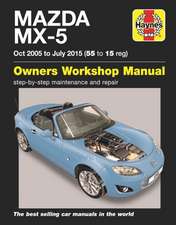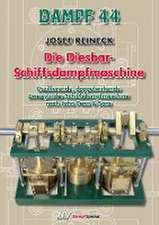Bike Boom: The Unexpected Resurgence of Cycling
Autor Mr. Carlton Reiden Limba Engleză Paperback – 14 iun 2017
Bicycling advocates envision a future in which bikes are a widespread daily form of transportation. While many global cities are seeing the number of bike commuters increase, this future is still far away; at times, urban cycling seems to be fighting for its very survival. Will we ever witness a true “bike boom” in cities? What can we learn from past successes and failures to make cycling safer, easier, and more accessible? Use of bicycles in America and Britain fell off a cliff in the 1950s and 1960s thanks to the rapid rise in car ownership. Urban planners and politicians predicted that cycling would wither to nothing, and they did their level best to bring about this extinction by catering to only motorists. But in the 1970s, something strange happened—bicycling bounced back, first in America and then in Britain.
In Bike Boom, journalist Carlton Reid uses history to shine a spotlight on the present and demonstrates how bicycling has the potential to grow even further, if the right measures are put in place by the politicians and planners of today and tomorrow. He explores the benefits and challenges of cycling, the roles of infrastructure and advocacy, and what we can learn from cities that have successfully supported and encouraged bike booms, including London; Davis, California; Montreal; Stevenage; Amsterdam; New York; and Copenhagen.
Given that today’s global bicycling “boom” has its roots in the early 1970s, Reid draws lessons from that period. At that time, the Dutch were investing in bike infrastructure and advocacy— the US and the UK had the choice to follow the Dutch example, but didn’t. Reid sets out to discover what we can learn from the history of bike “booms” in this entertaining and thought-provoking book.
In Bike Boom, journalist Carlton Reid uses history to shine a spotlight on the present and demonstrates how bicycling has the potential to grow even further, if the right measures are put in place by the politicians and planners of today and tomorrow. He explores the benefits and challenges of cycling, the roles of infrastructure and advocacy, and what we can learn from cities that have successfully supported and encouraged bike booms, including London; Davis, California; Montreal; Stevenage; Amsterdam; New York; and Copenhagen.
Given that today’s global bicycling “boom” has its roots in the early 1970s, Reid draws lessons from that period. At that time, the Dutch were investing in bike infrastructure and advocacy— the US and the UK had the choice to follow the Dutch example, but didn’t. Reid sets out to discover what we can learn from the history of bike “booms” in this entertaining and thought-provoking book.
Preț: 223.73 lei
Nou
Puncte Express: 336
Preț estimativ în valută:
42.82€ • 44.36$ • 35.73£
42.82€ • 44.36$ • 35.73£
Carte disponibilă
Livrare economică 28 februarie-14 martie
Livrare express 14-20 februarie pentru 28.93 lei
Preluare comenzi: 021 569.72.76
Specificații
ISBN-13: 9781610918169
ISBN-10: 1610918169
Pagini: 272
Ilustrații: one 8-page color insert, 95 photos
Dimensiuni: 152 x 229 x 25 mm
Greutate: 0.43 kg
Ediția:None
Editura: Island Press
Colecția Island Press
ISBN-10: 1610918169
Pagini: 272
Ilustrații: one 8-page color insert, 95 photos
Dimensiuni: 152 x 229 x 25 mm
Greutate: 0.43 kg
Ediția:None
Editura: Island Press
Colecția Island Press
Notă biografică
Carlton Reid is the executive editor of BikeBiz magazine, a publication for the bicycle trade based in the UK, and author of Roads Were Not Built for Cars (2015).
Cuprins
Foreword by Joe Breeze
Preface
Acknowledgments
Introduction
1. How Cyclists Became Invisible
2. From Victory Bikes to Rail Trails
3. Davis, The Bicycle Capital of America
4. Cycling in Britain—From Swarms to Sustrans
5. The Great American Bicycle Boom
6. The Rise and Fall of Vehicular Cycling
7. Where It's Easy to Bike and Drive, Brits and Americans Drive
8. How the Dutch Really Got Their Cycleways
Epilogue
Appendix A. "Bike boom" Mentions, 1896–2016
Appendix B. How the Bicycle Helmet Safety Institute was Formed from a 1970s-era Cycle Advocacy Organization
Appendix C. Vive la Velorution!
Bibliography
Index
Preface
Acknowledgments
Introduction
1. How Cyclists Became Invisible
2. From Victory Bikes to Rail Trails
3. Davis, The Bicycle Capital of America
4. Cycling in Britain—From Swarms to Sustrans
5. The Great American Bicycle Boom
6. The Rise and Fall of Vehicular Cycling
7. Where It's Easy to Bike and Drive, Brits and Americans Drive
8. How the Dutch Really Got Their Cycleways
Epilogue
Appendix A. "Bike boom" Mentions, 1896–2016
Appendix B. How the Bicycle Helmet Safety Institute was Formed from a 1970s-era Cycle Advocacy Organization
Appendix C. Vive la Velorution!
Bibliography
Index
Recenzii
"British journalist Carlton Reid fluently explains why bicycling has only had one real 'boom' in the past century-plus...The book will certainly make cycling advocates wiser."
"A well-researched, well-argued book that should be compulsory reading for anyone involved in the provision of cycle facilities."
"This well-researched, thought-provoking book fills a void in the literature, providing important cautionary lessons for today's bicycling advocates."
"As this book demonstrates in sharp and illuminating detail, the world needs the bicycle now more than ever."
"Reid has the easy and familiar style of the journalist, and the ability to help the reader form patterns with both cycle specific and general knowledge...this book is essential reading."
"Well-written and researched. Throughout the text, illustrations...augment the narrative."
"Bike Boom is full of heroes fighting for safe places for bikes, up against the Goliath of mass motorization. Carlton deftly tells the stories of the major battles over bikes in Europe and the United States from the 1930s through the 1970s. Not much has changed: we are still facing the same forces today, with the same arguments for and against. The book is a loving testament to yesterday's scrappy champions with lessons for all who persist today."
"Carlton Reid brings an essential—and often forgotten—historical depth to ongoing debates about cycling and cycling infrastructure. In Bike Boom, he maps the deeply political struggles that are hidden behind seemingly technical, or even banal, issues. Indispensable reading for those trying to grasp cycling, but even more so for those who are fighting the continuous fight for its place in contemporary cities and societies."
"Carlton Reid is one of the most well respected authors in the cycling world today, and with good reason. He is renowned for his political insight and meticulous research. Building on his earlier works—which delve into the history of this multi-purpose machine—Bike Boom is a beautifully fluid account of contemporary cycling and raises Carlton's reputation as a leading cycling aficionado to new heights."
Descriere
Bicycling advocates envision a future in which bikes are a widespread daily form of transportation, but this reality is still far away. Will we ever witness a true “bike boom” in cities? What can we learn from past successes and failures to make cycling safer, easier, and more accessible?
In Bike Boom, journalist Carlton Reid uses history to shine a spotlight on the present and demonstrates how bicycling has the potential to grow even further, if the right measures are put in place by the politicians and planners of today and tomorrow. He explores the benefits and challenges of cycling, the roles of infrastructure and advocacy, and what we can learn from cities that have successfully supported and encouraged bike booms. In this entertaining and thought-provoking book, Reid sets out to discover what we can learn from the history of bike “booms.”
In Bike Boom, journalist Carlton Reid uses history to shine a spotlight on the present and demonstrates how bicycling has the potential to grow even further, if the right measures are put in place by the politicians and planners of today and tomorrow. He explores the benefits and challenges of cycling, the roles of infrastructure and advocacy, and what we can learn from cities that have successfully supported and encouraged bike booms. In this entertaining and thought-provoking book, Reid sets out to discover what we can learn from the history of bike “booms.”













